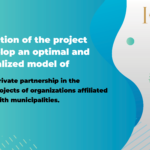Evaluating the effectiveness of employee training is one of the most important concerns in the field of human resource management. Human capital managers spend a lot of time and money on training and developing employees. In this regard, it is important to evaluate the effectiveness of training in organizations. According to the modern teachings of management science, human capital is one of the most important capitals of organizations, whose efficiency and effectiveness are more important than ever. It is obvious that with the passage of time and the development of the organization, the expertise of the employees may not match with the current knowledge of the world. In addition, employees must develop their skills to keep up with the changes in the organization. Continuous, purposeful and regular training is one of the tools for developing human capital. But if this tool is not accompanied by the evaluation of the effectiveness of education, it will not be effective.
Human capital management and the training unit, as one of its sub-categories, gather the training needs of employees and hold training courses internally or outsourced. It is natural that the purpose of holding these training courses is to improve the knowledge and skills of the employees and finally to receive their feedback at work. This process is done in large and medium organizations using training software. On the one hand, the training evaluation process gives an accurate picture of the training of employees to the managers of the organization, and on the other hand, it informs the training unit about the positive and negative aspects of training.
Many organizations are aware of the importance of employee training, however, they do not receive the necessary feedback from the cost and energy spent. This makes them doubt about continuing the education process. It should be kept in mind that simply holding training courses does not increase the efficiency and skill of employees. If the managers do not see the results of employee training in practice and it seems that the training courses do not have the necessary efficiency, the root of this problem should be sought in not adopting a strategic approach in the matter of training.
Performance review
The first step to design a useful training process is to review and evaluate the performance of employees and identify the cause of the gap between the current situation and the desired situation. Training becomes useful when it is determined in the evaluation stage that the reason for not achieving organizational goals is the need of employees to develop skills and knowledge. Otherwise, holding training courses will result in nothing but wasting time and money.
Educational needs assessment
This is the most important step in the process of training employees, which is the basis of other activities, evaluations and decisions. The result of this step is a set of needs that should be set based on priority and then basic actions should be put on the agenda to solve them.
Planning and execution
At this stage, the education experts, after the educational needs assessment, determine the resources needed to realize the educational program. The resources needed to implement the training program are divided into two categories: human resources (including executive staff and training staff) and material resources (including training facilities and training costs). Planning is important because it institutionalizes the training process in the organization.
Effectiveness assessment
The effectiveness of the held training courses can be measured by determining the degree of compliance of employees’ behavior with managers’ expectations, determining the amount of skills developed in employees to achieve goals, and also estimating the amount of correct work execution. Evaluating the effectiveness of training determines to what extent the costs incurred will lead to the realization of the goals of the organization by the recipient of the training.
What is the evaluation of the effectiveness of employee training?
Educational evaluation is a process used to determine the effectiveness of educational programs. This process includes measuring the results of education through predetermined criteria and standards. Training evaluation is an organized process during which data is collected and converted into information based on which the effects of training can be measured. The goals of evaluating the effectiveness of education in general are:
- Determining the degree of achievement of educational goals
- Determining the degree of compliance of trainees’ behavior with the expectations of their organizational role
- Determining the level of ability created as a result of training to achieve goals
- Determining the improvement of business success indicators
- Determining the visible results of the trainees in the implemented trainings
- Determining the accuracy and correctness of the work
- Determining the amount of added educational value
Reasons for implementing training effectiveness evaluation
Despite the cost and time spent on evaluating the effectiveness of employee training, it is necessary for the following reasons:
- Evaluation of educational effectiveness in the organization is done with objective and scientific criteria. It is obvious that subjective criteria are associated with judgment and prejudice and will not lead to reliable results.
- Compilation of educational regulations and bylaws binds the organization and future managers to the implementation of the education process and makes this cycle not complete.
- The principled implementation of the training process institutionalizes this cycle as a culture in the organization and reduces managers’ resistance to spending money on training.
- Even with the continuous implementation of training programs, lack of effectiveness evaluation reduces the effectiveness and efficiency of these programs.
- The implementation of the employee training evaluation program minimizes the training costs and gets the most benefit from the training costs of the employees.
- With the implementation of this program, the needs of employees, including knowledge, skill and behavior needs, will be matched with the training courses available in the organization.
- After the evaluation, managers can decide with certainty whether to continue or stop current training courses and explain future plans.
Selection of courses for the education evaluation process
A fundamental question is raised here; Which courses should be evaluated for which courses? To answer this question, we must first know whether the training course being evaluated is informative or skill-based. Awareness training courses are held only to familiarize and increase the knowledge of employees on a specific subject. On the other hand, skill training courses are held in order to improve work skills and improve employee performance. The evaluation process of training courses is done for skill courses and there is no need to evaluate awareness courses.
Selection of courses for the education evaluation process
In the following, some of the most important and widely used models of educational evaluation are briefly introduced:
London Business School model: This model was invented in 1997 by the London Business School (LBS). According to this model, assessment should be used to enhance an educational experience and this can only be achieved through the integration of assessment processes. Educational calendars, periodical evaluation meetings, action plans, mentoring (guidance) and stakeholder group reviews are some of the tools used in this model for educational evaluation.
Sullivan’s model: In this model, Dr. John Sullivan conducts educational evaluation in several stages and has designed the stages so that the value of each stage is greater than the previous stage. Before training, at the end of training, delayed effects regardless of work environment, change in workplace behavior, change in workplace performance and other measurement criteria.
KMPT model: In this model, Dr. John Sullivan conducts educational evaluation in several stages and has designed the stages so that the value of each stage is greater than the previous stage. Before training, at the end of training, delayed effects regardless of work environment, change in workplace behavior, change in workplace performance and other measurement criteria.
Kirkpatrick model: Kirkpatrick model is one of the most widely used and successful evaluation models in education. This model was presented by Donald Kirkpatrick in 1952, and many years later it was the focus of management science theorists. Kirkpatrick’s model, with a codified and analyzable method, evaluates the people of the group after training and brings positive results for the educational planning of the organization. In this model, the effectiveness of educational programs is examined in four levels of reaction, learning, behavior and result.
Phillips model: The Phillips model, as a result of developing the Kirkpatrick model, is presented to the fifth level, i.e. return on investment. Using this model, it is possible to calculate the return on investment of a training course, and if the return on investment does not match the costs spent, that course can be removed from the training program. One of the strengths of this model is the separation of the effects of the educational program from other factors that affect it.
The reasons for the diversity of employee training evaluation patterns
As mentioned, different models are used to evaluate the effectiveness of employee training. But what is the reason for the diversity of these patterns? Each of these models is prepared based on different perspectives and targets certain aspects of the evaluation process. Evaluation of learner behavior, evaluation of educational items and teaching methods, evaluation of curriculum planning and evaluation of information collected for decision making are among the perspectives that have been considered by theorists in the formulation of evaluation models. Among other reasons for the multiplicity of educational evaluation models, the following can be mentioned:
- Experts have taken into account newer value considerations and proposed new models.
- Specialists have added their experiences to the previous patterns and designed a new pattern based on it.
- The variety of evaluation patterns may be the result of their emergence in different situations.
- Evaluation patterns may be designed to modify the program or gain insight into the effectiveness of the program. Therefore, another reason for the variety of patterns is the variety of goals.












